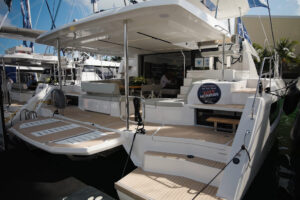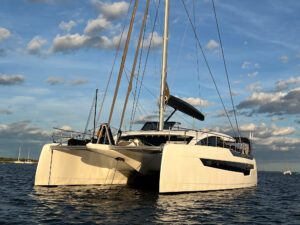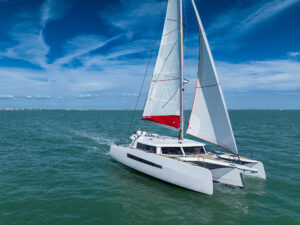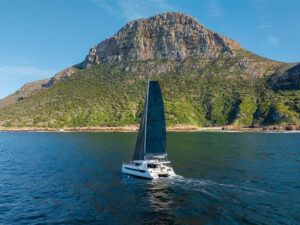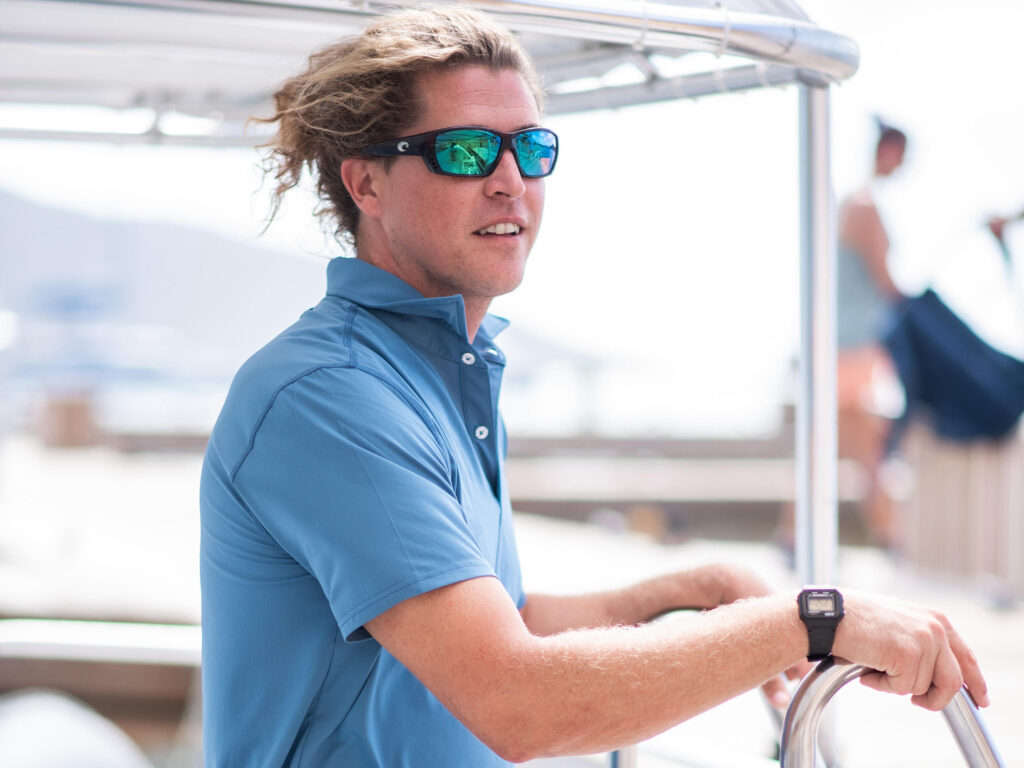
From cash register to marina director, watersports helmsman Nick Putnam knows better than most about the ins and outs of Bitter End. In our sit-down with Nick, he recalls his come-up story of how he went from “What’s watersports?” to leading the team, plus he hints at some exciting coming attractions for BEYC 2.0.
BE: So, Nick, how’s it feel to be at the helm of Bitter End’s marina and watersports program?
NP: Honestly, it has happened very organically. It certainly didn’t happen overnight, so, you know, I feel like at this point, it comes easy, in a sense.
BE: Take us back to your first days at Bitter End. When did you arrive onshore?
NP: February of 2013. Honestly, it’s gone by pretty quickly.
BE: You’re celebrating a decade in the North Sound. What brought you here?
NP: I was working as a sailing instructor at a summer camp up in Michigan, where I’m from. I was 18 years old and barely knew how to sail, but the camp gave me an opportunity to really fall in love with it. The other lucky thing was that Jerome Rand, BEYC’s then-watersports director, also worked at that camp. I was the kid just following him around everywhere, pestering him constantly to figure out what I needed to do, what certifications I needed, to get to Bitter End. I just wanted to work with the watersports team, so when I actually got hired, I didn’t even mind that it was as the kids’ camp director, which is one step down even from being an instructor. But I was able to start giving sailing lessons, and I was learning to windsurf at the time, and doing all these activities that aren’t really a thing in Michigan.
BE: So your first exposure to many watersports was at Bitter End itself?
NP: Yes, I knew how to sail and I had some experience with windsurfing, but very little.
BE: Is windsurfing still your favorite watersport?
NP: It is. I’d say most people know me as a pretty avid windsurfer. People always kind of give me a hard time for it, because, by and large, kiting really rose in popularity, and then the latest and greatest is now wingfoiling. But I’m a bigger guy, and as I joke to my friends, I’m not really built to fly through the air like some. But I like to go fast, and I like the physical nature of windsurfing. It’s a good workout.
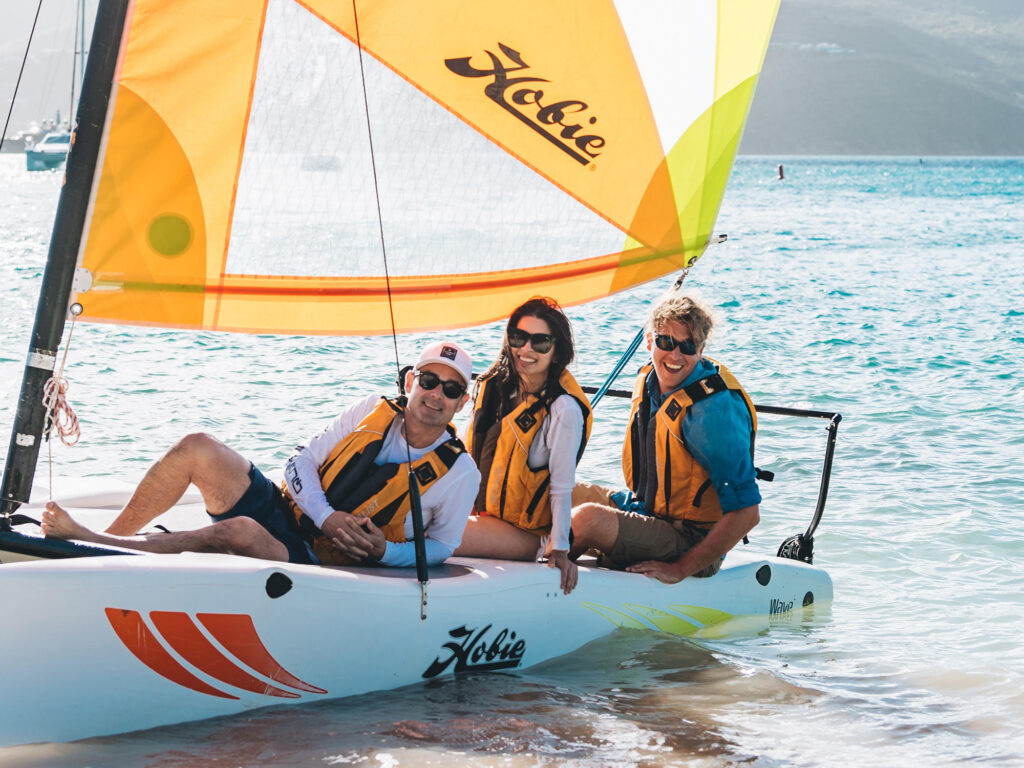
BE: Speaking of foils, where is the future of watersports headed?
NP: Well, the sports themselves are changing, and everything’s becoming pretty foil-dominant. Look, foils are a ton of fun, but the biggest thing is that the equipment disconnects into a few different pieces and goes into a bag. And so you easily travel with it or store it on a boat, and take it out just as easily.
BE: What does that mean for Bitter End’s programming, where watersports old and new are central to its appeal? What will stay and what might change?
NP: The Hobie Cats aren’t going anywhere—they’re forever popular. They were the pillar that we started with when we reopened, and we’ve built around that. And even windsurfing, we still get a fair amount of people coming down for it—which is great, obviously, because you know how I like it. Plus, a lot of guests, some of them don’t even want to go out on the water; they just want to see the windsurfers out there. So those iconic elements of Bitter End’s watersports will always be here.
As for what’s new, the biggest thing is just that we are in this kind of second iteration of Bitter End. In many ways, it’s so similar, but it’s also very much different. And so, we have an opportunity to try something out, and see if it works. If it doesn’t work, we try something else, you know? The same with the team—we’re bringing in the next generation and giving them opportunities to contribute. So that’s been the probably the most rewarding part.
BE: Where are you most likely to be found on your days off?
NP: Sometimes you can find me in the laundry room, sadly. [Laughs] No, I’d say, depending on what the day has given me, it likely includes a water activity. If it’s a calm day, I’m down to the beach, just hanging out, in and out of the water, probably got the barbecue going. I mean, even on a day off, you’ll likely find me back at BEYC, either down at watersports or at the Reef Sampler Bar.
BE: To that point, people often say that Bitter End feels more like a family than a place. What’s in the water that you want to be here, even on your days off?
NP: I think it’s a few things. First, it’s incredibly cool to be able to come down here and pick up something new, whether it be watersports or a new connection. You’re rubbing elbows with a lot of interesting people but in a very relaxed way on a day-to-day basis. You’re given the world, almost, you know what I mean? Then it’s on you to take advantage of it.
Beyond that, not only do the owners treat you as family, but everyone who works here, past and present, becomes part of BEYC’s shared history. The place really does feel like it belongs to all of us. So, after a day spent working hard and then going hard on the water, you’re with your co-workers bonding over meals, maybe even a few rums, and you’re sharing stories—about yourselves, but also about people who have come and gone. Which is great, because when they come back, you feel like you already know them, even if you haven’t met yet.
And then, bit by bit, just as you get to know the place, the place gets to know you. I’ve found this part of the world to just be one of these places that continues to open up.
BE: Bitter End certainly has a legendary history, but especially now, it’s future is looking equally epic. Peer into your crystal coconut: What you see as the future of BEYC’s marina and watersports program? What happens in the next decade?
NP: Looking forward, I’d say the most exciting thing is really just building on the momentum that we’ve already got. With watersports, we’ll be reintroducing different things like excursions, whether it be snorkel trips or day trips to different islands. For the marina, we want to grow its size, but across the board, we’re also focused on living up to our name and turning Bitter End into more of a yacht club, which is fun as well. There’s a lot—I mean, a lot—to come. This is really just the beginning.
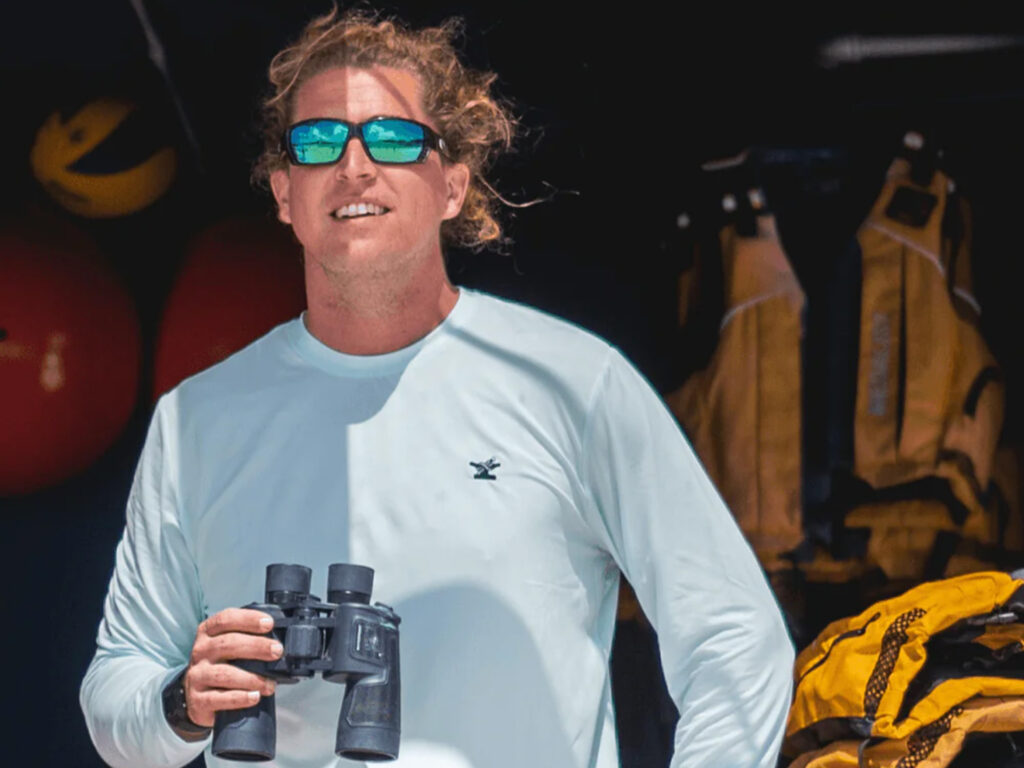
BE: Sounds like a pretty epic place to start.
NP: You know, I think the biggest thing is we just don’t want grow too much too fast. So what we’re doing right now is we’re adding things one by one or two by two, rather than saying, “Here’s a massive resort, push play, go!”
Instead, we’re growing incrementally with demand, so we know we’ll have exactly what customers are looking for. No more, no less. We want to help people enjoy this beautiful place, not overbuild and get in the way of their good time.
BE: To be honest, that sounds exactly how Bitter End was built the first time, piece by piece.
NP: Things really have come full circle, right? Bitter End started back in the late ’60s, early ’70s with a marina, restaurant, couple of rooms, and a little bit of watersports action, and then it became the big hit that it was for so many years. Will it be like it was before? I don’t think the plan is necessarily the same, but it’s a lot of the same working parts, for sure.
BE: Well it ended up in a pretty good place before, so it’s pretty thrilling to think about what’s to come.
NP: Exactly! I’m just honored to be here to see it through.

